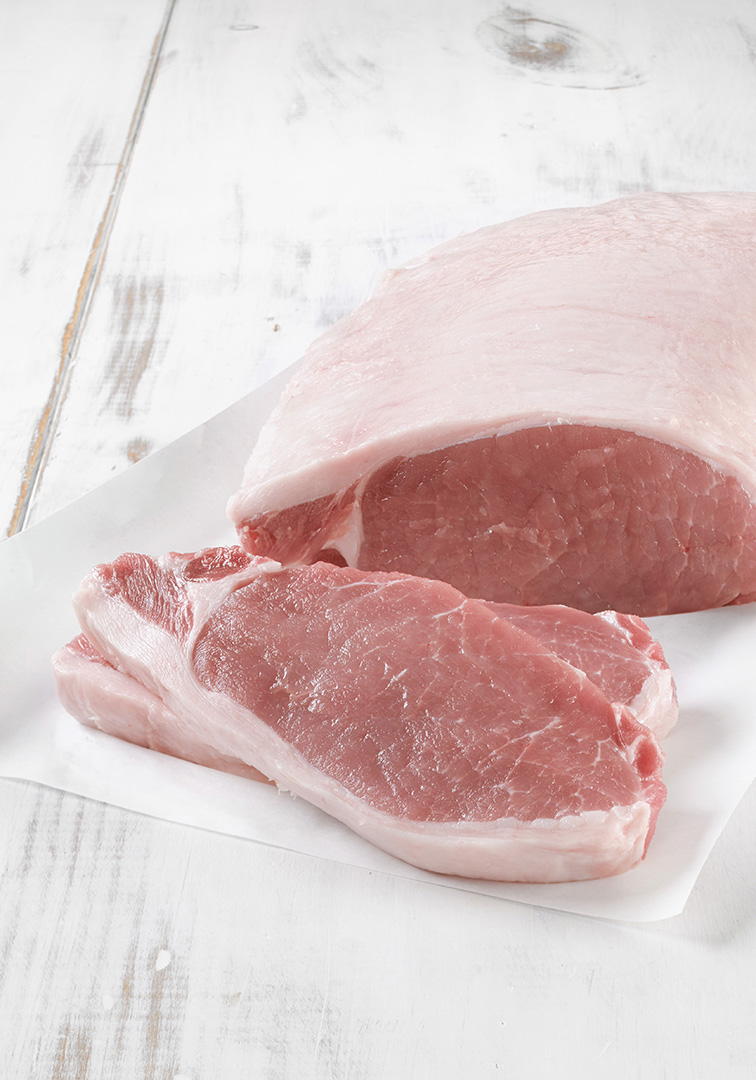Pork loin

Pork loin is a popular, versatile cut, prized for its tenderness and delicate flavour. Let’s explore its characteristics, advantages and tips for a tasty preparation.
Key features
Pork loin comes from the back of the hog, extending from the shoulder to the rump. It’s made up of long, lean muscles, often covered with a thin layer of fat that adds flavour without being too fatty.
- Less fatty than other cuts of pork, it has a mild flavour that blends well with a variety of seasonings and sauces.
- Pork loin is known for its tenderness, especially when cooked properly. The meat is naturally lean so it can easily become dry if overcooked.
- It can be prepared in a variety of ways – roasted, grilled, sautéed or even braised.
Cooking techniques
- Cut into rounds and pan sear : Fry over high heat 3 minutes per side, then over low heat until internal temperature reaches 145°F.
- Roasting pork loin is a classic method. For best results, we recommend cooking 45 minutes at a moderate temperature (350°F) to avoid drying out the meat
- Ideal for barbecues, grilled pork loin should be cooked quickly over medium-high heat to preserve its juiciness. Cut into 1-inch dice, assemble into skewers and grill for about 4 minutes on each side.
- Even lean pork loin can be successfully braised, especially when cut into medallions or chops. This method develops deep flavours and keeps the meat tender.
- This method guarantees perfect cooking at low temperatures. Sealing the meat in an airtight bag and cooking it in a double boiler ensures an even texture and exceptional tenderness.
- Cutting the loin into thin slices and sautéing them over high heat with vegetables and sauces can be a quick, tasty option for a balanced meal.
:quality(65))
:quality(65))
:quality(65))
:quality(65))
:quality(65))
:quality(65))
:quality(65))
:quality(65))
:quality(65))
:quality(65))
:quality(65))
:quality(65))
:quality(65))
:quality(65))
:quality(65))
:quality(65))